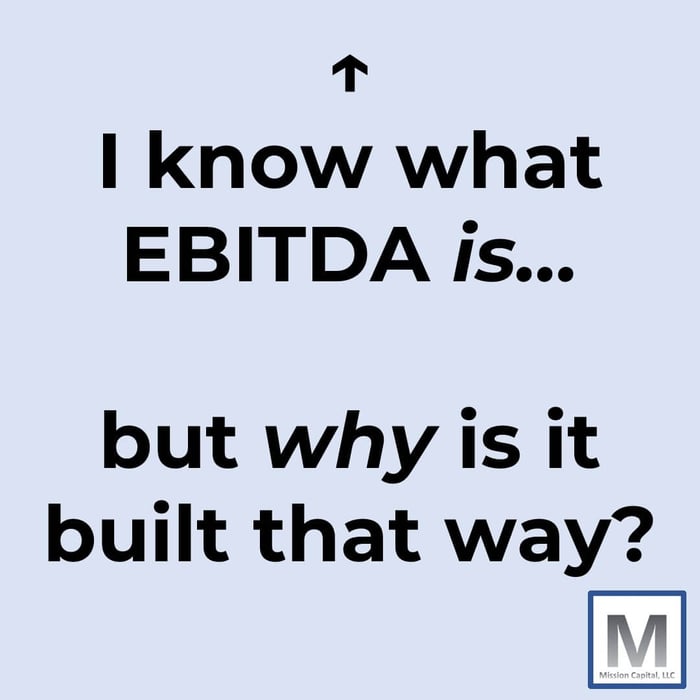I see a ton of posts on what EBITDA 𝘪𝘴, but how about 𝘸𝘩𝘺??
Start with, it's an approximation of the operating cash flow of a business.
This cash flow serves as a basis for valuation and will be multiplied by some kind of multiple.
For example, $1,000,000 EBITDA x 8.0x = $8,000,000 valuation.
(the 8.0x is just determined in the market, btw, by looking at comparable transactions for similar companies)
The key thing here: every $1 dollar of EBITDA is worth $8 dollars (at least in this example).
So you can imagine a seller wants the EBITDA as high as possible, whereas a buyer wants it as 𝘳𝘦𝘢𝘴𝘰𝘯𝘢𝘣𝘭𝘦 as possible (too low won't attract buyers in the first place).
———
Okay, got it, so 𝘸𝘩𝘺 do we include what we do?
We start with Net Income, and that's easy enough, that is the "profit" or "earnings" of the company after all.
But Net Income 𝘪𝘴𝘯'𝘵 cash, we have to adjust it to get the cash.
Let's do the easy ones first: Depreciation & Amortization.
Those are 𝘯𝘰𝘯-𝘤𝘢𝘴𝘩 expenses, and we're trying to build an approximate operating cash flow.
So we "add-back" those expenses to Net Income.
———
The next one is a little trickier, Interest.
Why Interest?
Because a company could be purchased with all equity and wouldn't need any debt, and therefore wouldn't have Interest Expense.
So we "add-back" the Interest Expense to show what it would look like "debt free."
———
Next one is even trickier, Taxes.
Don't we all have to pay taxes? So why add this back?
It all comes down to the business structure.
There are several business structures known as pass-through entities, meaning there is no "corporate income tax." Rather, the taxes are "passed through" the business and end up on the personal returns of the members.
Typical pass-through entities would be S Corps, Sole Proprietorships, LLCs, and Partnerships.
The structure that is not a pass-through is a C Corporation. This type of business would show an income tax expense on it's income statement (whereas the other types would not).
So, that is why it gets added-back -- we are showing a "tax-neutral" view of the business knowing that its business structure could change as part of an acquisition.
———
Those are the basics. From there it gets even more abstract with discretionary adjustments and pro forma adjustments, but I'll save those for another day.
💻 If and when the time is right, I offer Advanced Financial Modeling Courses for FP&A and Private Equity Professionals. Check them out if you're interested (if not, that's cool too 👍).

